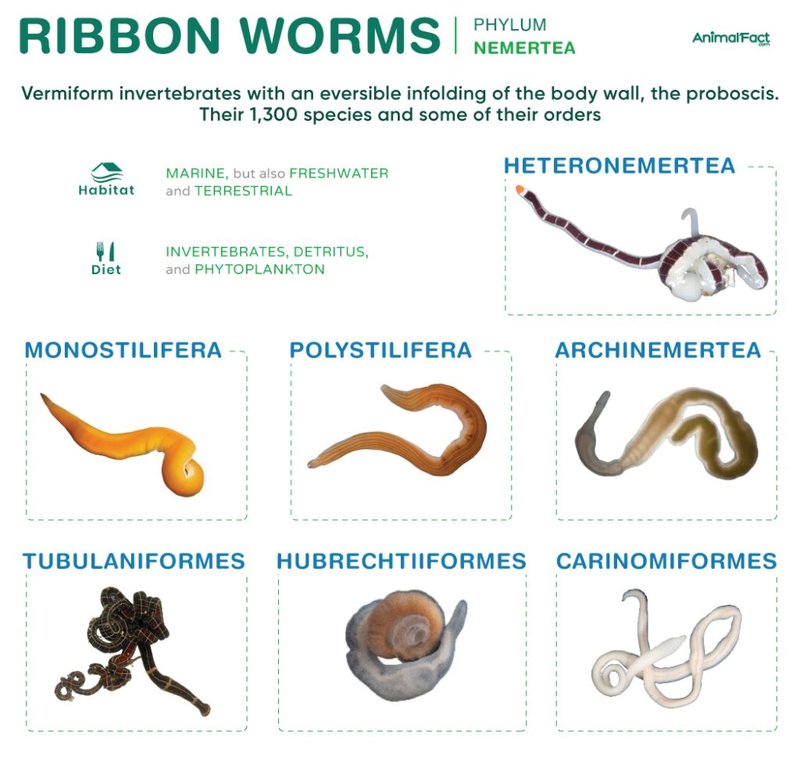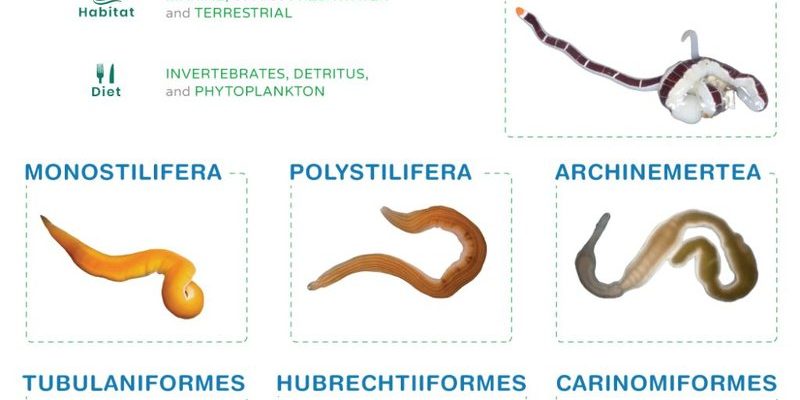
When we talk about burrowing, we aren’t just discussing where these worms hide; it’s about understanding how they interact with their environment. Ribbon worms, belonging to the phylum Nemertea, utilize their specialized bodies to dig into sediments and create burrows that protect them from predators and harsh conditions. So, you might be wondering, what do they prefer to dig into? Let’s dive deeper into their burrowing behavior and the substrates that they call home.
Understanding Ribbon Worms: An Overview
Before we get into the nitty-gritty of ribbon worm burrowing and substrate preferences, let’s take a moment to understand what they are. Ribbon worms come in various colors and can grow quite long, with some species reaching up to 30 meters! Yes, you read that right; they’re often referred to as “long-bodied” due to their lengthy, flat appearance. They are mostly found in marine environments, but some species inhabit freshwater systems too.
Here’s the thing: ribbon worms are known for their unique feeding habits. They often hunt soft-bodied prey like small crustaceans and other invertebrates. They have a specialized feeding structure called a proboscis that they can extend to capture their food. This means that their burrowing behavior is not just about safety; it’s also about positioning themselves for the next meal.
Understanding these aspects of ribbon worms can help you appreciate their intricate place in the ecosystem. By creating burrows, they not only protect themselves but also contribute to the overall health of their habitats.
Why Burrowing Matters for Ribbon Worms
Burrowing is crucial for ribbon worms, and it goes beyond simple shelter. Imagine if you had to deal with harsh weather conditions every day. For these worms, burrowing provides a refuge from predators, extreme temperatures, and environmental changes. Their burrows can be moist, dark, and safe, creating a perfect home for these slender beings.
Burrowing also helps in keeping the sediment aerated. Worms like these play a vital role in their ecosystem, promoting nutrient cycling and ensuring that microorganisms thrive in the soil. They essentially help maintain the health of their habitat, making it a better place for other marine life.
When we take a closer look, it becomes clear that ribbon worm burrowing is about survival and thriving within their environment. So what do they dig into? Let’s find out!
Substrate Preferences: The Ideal Conditions
When it comes to substrate, ribbon worms have distinct preferences that shape where they choose to burrow. They thrive in soft, pliable sediments, making mudflats and sandy shores their go-to choices. Here’s why:
- Soft Sediments: These allow for easier burrowing. The softer the ground, the easier it is for ribbon worms to create a burrow without expending too much energy.
- High Organic Matter: Ribbon worms often prefer substrates rich in organic content. This is because they are more likely to find their favorite prey—small invertebrates—within these nutrient-rich areas.
- Moisture Levels: Since ribbon worms can dry out quickly, they tend to burrow in areas where moisture is retained, like near tidal zones or within wetlands.
Understanding what substrates ribbon worms prefer helps scientists and environmentalists monitor their populations and the health of their habitats. If these conditions change—for example, due to pollution or habitat destruction—it can significantly impact ribbon worm survival.
Diving Deeper: The Mechanics of Burrowing
How do ribbon worms actually burrow? It’s a fascinating process! They use their elongated bodies and a series of muscular contractions to push into the substrate. Imagine this as a form of swimming, but instead of water, they’re gliding through the mud.
When they decide to burrow, ribbon worms can also secrete mucus that helps facilitate their movement through the substrate. This mucus acts like a lubricant, making it easier for them to carve out their homes. The burrows they create can range from simple, shallow holes to more complex systems that can extend several inches deep.
You might be wondering what happens when they need to leave their burrow for food or other activities. Ribbon worms can quickly retract back into their burrows, almost like a turtle pulling back into its shell. This swift action is crucial for their protection against predators.
Environmental Factors Influencing Substrate Preferences
Several environmental factors can influence the types of substrates ribbon worms prefer. One of the key factors is the salinity of the water. In estuarine environments where freshwater meets saltwater, ribbon worms often thrive because they can adapt to varying salinity levels.
Temperature plays a role as well. Ribbon worms tend to favor warmer waters during the summer months, which can lead to increased activity and burrowing. In colder temperatures, they may become less active and retreat deeper into the substrate to conserve energy.
Another factor is the presence of pollutants or changes in sediment composition. Changes in land use, like increased construction or farming activities, can lead to sediment runoff that alters the natural environments of ribbon worms. Understanding these factors helps conservationists take steps to protect their habitats.
Comparing Ribbon Worms to Other Burrowing Creatures
You might be curious about how ribbon worms stack up against other burrowing creatures like earthworms or clams. While they all dig into the substrate, their methods and purposes differ.
For example, earthworms are crucial for soil aeration and nutrient cycling in terrestrial environments. They consume organic matter and help enrich the soil. On the flip side, ribbon worms play a vital role in aquatic ecosystems. Their burrowing helps maintain sediment health and provides a hunting ground for their prey.
Clams, on the other hand, burrow for different reasons. They create burrows to anchor themselves in place and filter food from the water. The processes they engage in and their contributions to their environments are unique, showcasing the beauty of biodiversity.
Conservation and the Future of Ribbon Worms
With changes in our ecosystems due to pollution, habitat destruction, and climate change, understanding ribbon worms and their substrate preferences is more important than ever. Conservation efforts are crucial to ensure that these worms continue to thrive.
One way to support these creatures is by promoting healthy coastal ecosystems. You can do this by participating in clean-up efforts, advocating for responsible land use, and supporting policies that protect natural habitats. Every little action counts in safeguarding the environments where ribbon worms live.
By learning about ribbon worms and their needs, we can help maintain the balance in our ecosystems. After all, they’re not just fascinating creatures; they play an essential role in maintaining the health of our waterways.
In summary, understanding ribbon worm burrowing and substrate preferences gives us a clearer picture of their world. They are remarkable creatures that navigate their environment with skill. By appreciating and protecting these unique worms, we contribute to a healthier planet for future generations. Let’s keep exploring the wonders of nature together!

